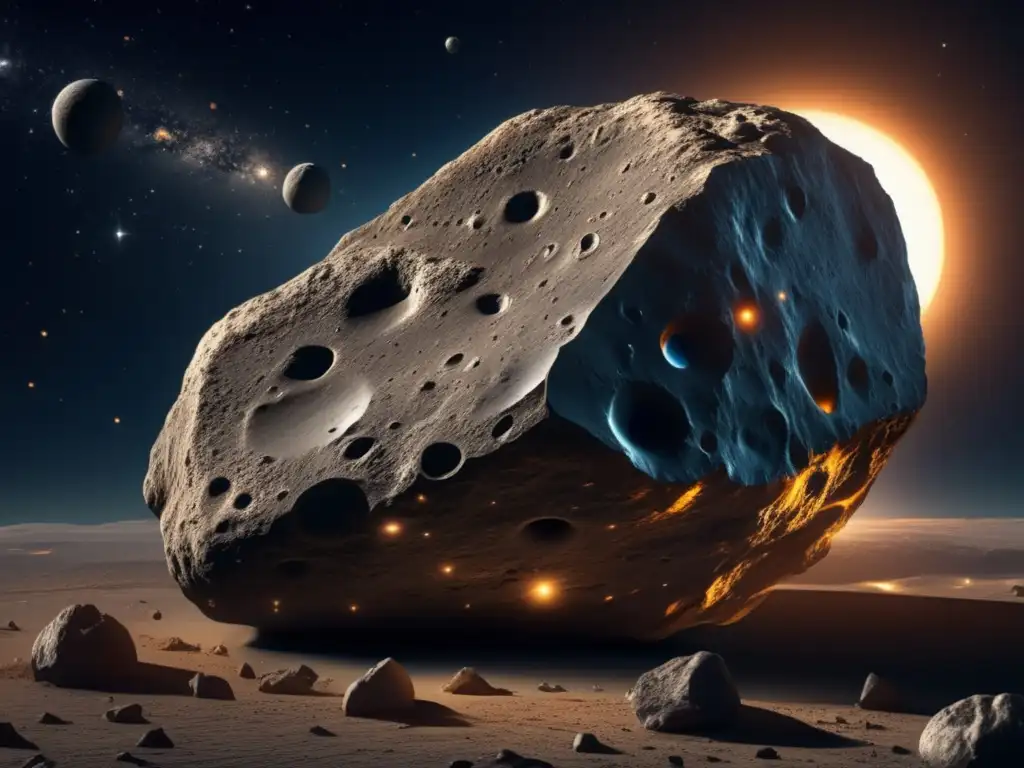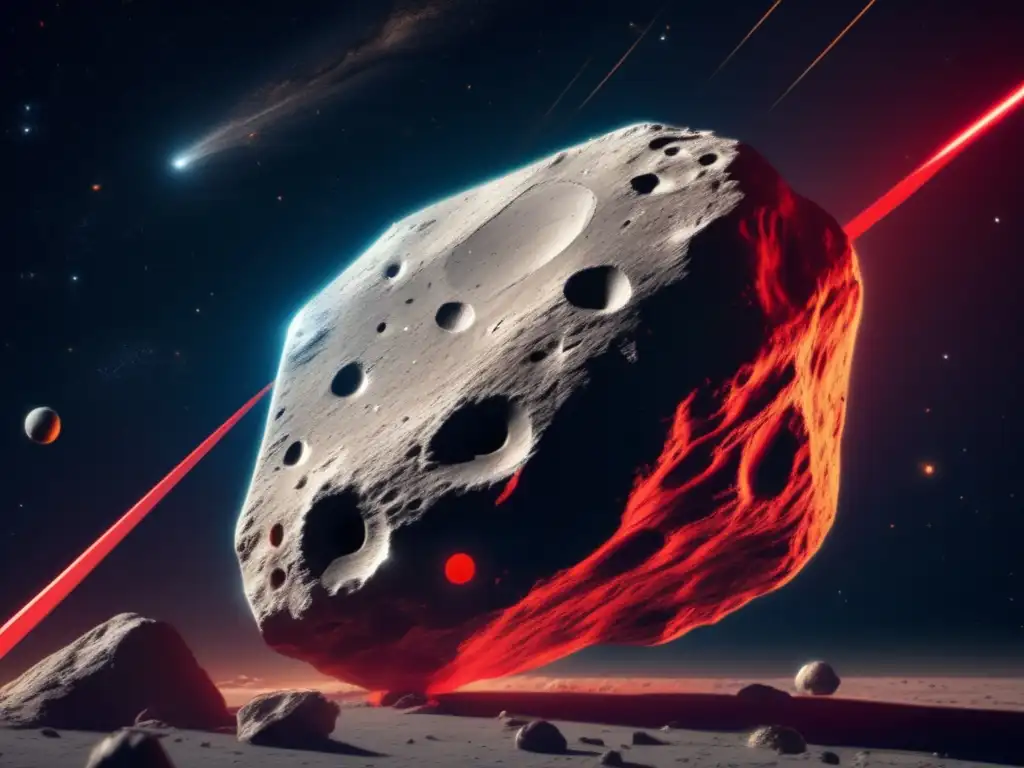Ready, Aim, Deflect: The Latest In Asteroid Defense Strategies

Introduction
Asteroids can be a real threat to our planet, and we need to be prepared for the possibility of a collision. Luckily, there are many asteroid defense strategies being developed to protect us from this catastrophic event. In this article, we will discuss the latest in asteroid defense strategies that are currently being researched and implemented.
Deflection Techniques

Kinetic Impactors
Kinetic impactors are the most commonly used asteroid deflection technique. The idea behind kinetic impactors is to hit an asteroid with a spacecraft, which would change its course and prevent a collision with Earth. The technique was successfully demonstrated by NASA's Deep Impact mission in 2005, where a spacecraft collided with the comet Tempel 1. The European Space Agency (ESA) is currently developing a mission called Hera, which will demonstrate the effectiveness of this technique on a binary asteroid system named Didymos.
Gravity Tractors
The gravity tractor is another asteroid defense technique being researched by NASA. The idea behind the gravity tractor is to use the gravitational pull of a spacecraft to subtly change the course of an asteroid. This technique is based on the principle that objects with mass attract each other. A spacecraft would be positioned near an asteroid, and over time the tiny gravitational pull of the spacecraft would gradually alter the asteroid's trajectory. Although this technique takes longer than kinetic impactors, it is non-destructive and can be used on larger asteroids.
Solar Sails
Solar sails are large sheets of ultra-thin material that use the pressure of sunlight to propel a spacecraft through space. NASA has proposed using solar sails as a means of deflecting asteroids. The idea is that a spacecraft equipped with a solar sail would be positioned near an asteroid and use the pressure of sunlight to gradually alter the asteroid's trajectory. This technique is still in the experimental phase, but it has the potential to be used for future asteroid defense.
Early Detection Systems

Pan-STARRS
The Panoramic Survey Telescope and Rapid Response System (Pan-STARRS) is a system designed to detect and track asteroids and comets. It consists of four telescopes located in Hawaii that scan the sky for any objects that might pose a threat to Earth. Pan-STARRS uses advanced algorithms to analyze the data collected by the telescopes and predict the trajectory of any detected asteroids. This system has already discovered many near-Earth asteroids and is a crucial part of our asteroid defense strategy.
NEOCam
The Near-Earth Object Camera (NEOCam) is a proposed infrared telescope that would detect and track asteroids that could potentially collide with Earth. The NEOCam mission is currently being considered by NASA for funding. If approved, NEOCam would be launched in the mid-2020s and would greatly enhance our ability to detect and track potentially hazardous asteroids.
International Cooperation

The United Nations
The United Nations has established the International Asteroid Warning Network (IAWN) and the Space Mission Planning Advisory Group (SMPAG) to coordinate asteroid defense efforts worldwide. IAWN is responsible for detecting and tracking potentially hazardous asteroids, while SMPAG is responsible for developing and coordinating missions to deflect them.
The European Space Agency
The European Space Agency is working on a mission called Hera, which will demonstrate the kinetic impactor technique on a binary asteroid system named Didymos. The mission is scheduled to launch in 2024 and will be a joint effort between ESA and NASA. This collaboration between the two agencies is crucial for the success of our asteroid defense strategy.
Frequently Asked Questions

-
What is the most commonly used asteroid deflection technique?
The most commonly used asteroid deflection technique is kinetic impactors, where a spacecraft collides with an asteroid to change its course.
-
Can solar sails be used to deflect asteroids?
Yes, solar sails can be used to deflect asteroids. The pressure of sunlight can gradually alter an asteroid's trajectory over time.
-
What is NEOCam?
NEOCam is a proposed infrared telescope that would detect and track potentially hazardous asteroids that might collide with Earth.
-
Why is international cooperation important for asteroid defense?
International cooperation is important for asteroid defense because it allows for the sharing of resources and expertise, which is crucial for developing effective asteroid defense strategies.
-
What is the United Nations' role in asteroid defense?
The United Nations has established the International Asteroid Warning Network (IAWN) and the Space Mission Planning Advisory Group (SMPAG) to coordinate asteroid defense efforts worldwide.
Conclusion
Asteroid defense is a critical issue that requires our attention and resources. Fortunately, there are many effective asteroid defense strategies being developed and implemented. From kinetic impactors to early detection systems to international cooperation, we are making progress in protecting our planet from a catastrophic asteroid collision. We must continue to invest in our asteroid defense systems to ensure that we are prepared for any potential threats.
Thank you for reading this article. We encourage you to share your thoughts on asteroid defense and interact with www.asteroidrealm.com through comments, subscriptions, and social media sharing. For additional resources on asteroid defense, please check out the links and references provided below.
Additional Resources

NASA's Planetary Defense website
The European Space Agency's Hera mission
Jet Propulsion Laboratory's Center for Near Earth Object Studies
 Facing The Cosmic Threat: Techniques For Asteroid Defense
Facing The Cosmic Threat: Techniques For Asteroid Defense Planetary Shield: The Science Of Asteroid Defense
Planetary Shield: The Science Of Asteroid Defense Gearing Up For Galactic Threats: Strategies For Asteroid Defense
Gearing Up For Galactic Threats: Strategies For Asteroid DefenseIf you want to discover more articles similar to Ready, Aim, Deflect: The Latest In Asteroid Defense Strategies, you can visit the Planetary Defense category.
Leave a Reply

Articulos relacionados: